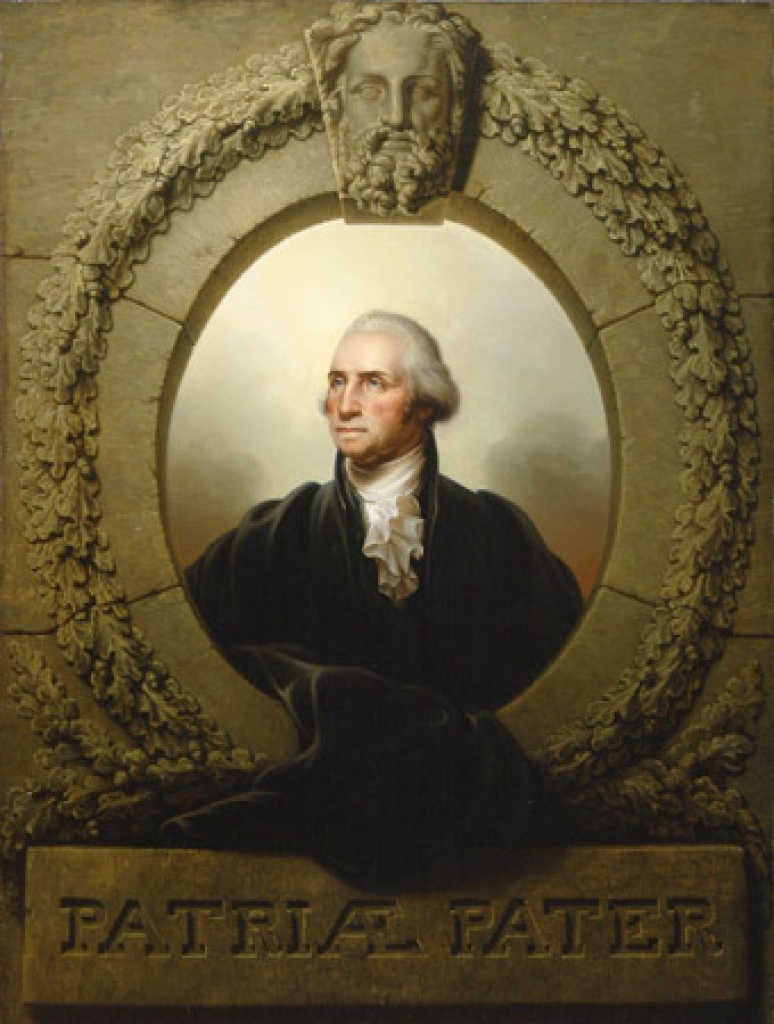
George Washington, Patriae Pater
ca. 1824
One of a series of at least 79 portraits of Washington painted by Rembrandt Peale, only one of them from life. In this "porthole" style painting Washington is surrounded with classical motifs. The oak wreath or "corona civica," awarded to Roman citizens for saving the life of a fellow citizen in battle, along with the Latin legend "Patriae Pater" or "Father of his Country" probably evoke classical republican ideals rather than the Emperor Augustus, who was given the title Augustus and awarded the civic crown in 27 BCE and in 2 BCE received the title "Pater Patriae." The mask of Jupiter, king of the Roman gods, in the keystone affirms not only Washington's supremacy, but also classical ideals of leadership. Philadelphians may have remembered the Walnut Street Theatre's display on December 23, 1799, ten days after Washington's death, which featured "an affecting scene of a tomb, in the center of which was a portrait of the sage and hero, encircled by oak leaves."
Source
Rights
The general rights statement in the following paragraph does not apply to this image. Image reproduced from the Greenfield American Art Resource Project at the Pennsylvania Academy of the Fine Arts under the Fair Use Doctrine. Classicizing Philadelphia authorizes no other use whatever, whether non-commercial or commercial, of this specific image. For all uses, including educational, cultural, and scientific appropriations, contact the Pennsylvania Academy of the Fine Arts, 118 North Broad Street Philadelphia, PA 19102 215-972-7600; www.pafa.org.
Coverage
American
Format
Oil on canvas
Peale, Rembrandt (American painter, 1778-1860), “George Washington, Patriae Pater,” Classicizing Philadelphia, accessed April 24, 2024, https://ds-omeka.haverford.edu/classicizingphiladelphia/items/show/408.